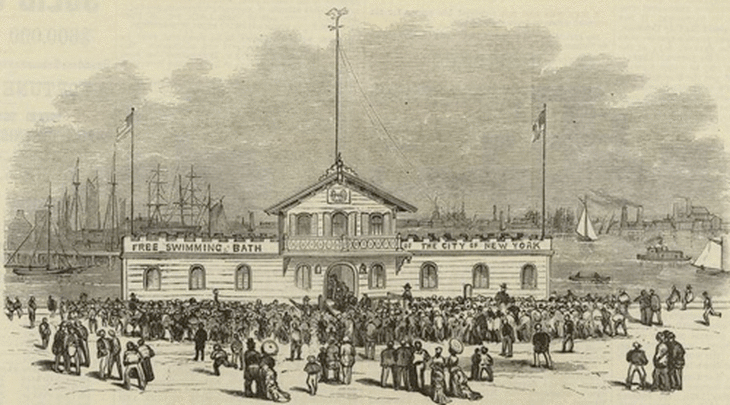Rivers, Filth and Heat: Riverbaths and the Fight over Public Bathing
By Naomi Adiv
In the summer of 1870, New York City got its first municipal bath: swimming pools sunk into the rivers, through which river water flowed. An 1871 New York Times article describes them: “baths are of the usual house-like model, and have a swimming area of eighty-five feet in length by sixty-five feet in width. They are… provided with sixty-eight dressing-rooms, have offices and rooms in an additional story, and are well lighted with gas for night bathing.” In the year after they were built, the Department of Public Works reported that they were regularly used to their capacity, particularly on hot summer days. At their height, there were twenty-two such baths around the waters of New York City.
Read More









